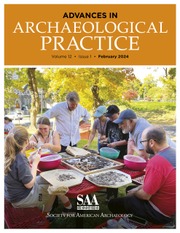Article contents
Identifying Mimbres Artists
A Quantitative Approach
Published online by Cambridge University Press: 16 January 2017
Abstract
Past researchers have identified individual styles of painting in Mimbres Black-on-white bowls, leading Steven LeBlanc to recently call for the development of quantitative methods to enable and assess such identifications. We propose such a methodology here. Through a process of pair-wise, micro-stylistic comparisons, bowls painted by a single artist or group of closely cooperating artists are analytically linked in chain-like fashion. Two bowls are attributed to the “same hands” if their similarity measure is at or above 70 percent. Similarity measures are determined by comparing minute details that reflect artistic decisions. The method takes into account diachronic development of artistic skill, subject matter diversity, and the transfer of style across generations. Results can contribute to an understanding of stylistic development, craft specialization, and the role of artists in traditional societies.
Investigadores anteriores han identificado estilos individuales de pintura en cajetes Mimbres Negro-sobre-blanco (Mimbres Black-on-white), llevando recientemente a Steven LeBlanc a exhortar el desarrollo de métodos cuantitativos para permitir y evaluar dichas identificaciones. Proponemos un ejemplo de dicha metodología en este trabajo. Por medio de un proceso de comparaciones micro-estilísticas por pares, los cajetes pintados por un solo artista o un grupo de artistas cooperando cercanamente se vinculan analíticamente de una manera en cadena. Dos cajetes se consideran como pintados con “las mismas manos” si su medida de similitud se encuentra en o arriba del 70 por ciento. Las medidas de similitud se determinan comparando detalles diminutos que reflejen las decisiones artísticas. El método toma en cuenta el desarrollo diacrónico de las habilidades del artista, la diversidad del tema y la transferencia del estilo a través de generaciones. Los resultados pueden contribuir a entender el desarrollo estilístico, la especialización artesanal y el papel de los artistas en sociedades tradicionales.
Information
- Type
- Research Article
- Information
- Copyright
- Copyright © Society for American Archaeology 2015
References
References Cited
- 5
- Cited by

